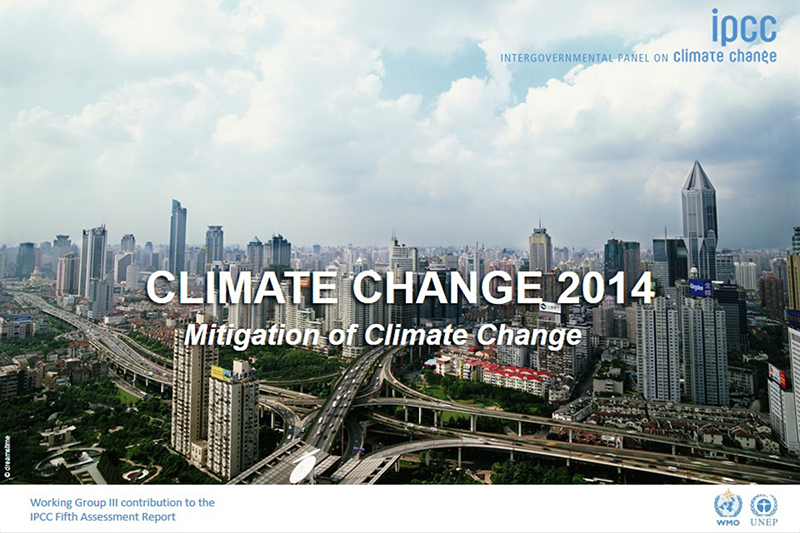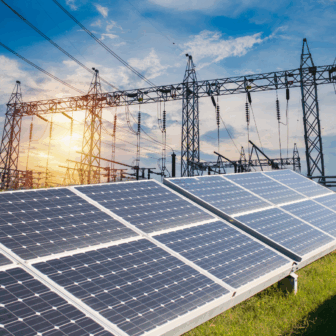The biggest climate news of the past few weeks came when the Intergovernmental Panel on Climate Change released its first comprehensive report since 2007. Although the information wasn’t surprising, the urgent tone of the report and its claim that the worst impacts of climate change are still to come caught the world’s attention. According to the New York Times, the report “concluded that ice caps are melting, sea ice in the Arctic is collapsing, water supplies are coming under stress, heat waves and heavy rains are intensifying, coral reefs are dying, and fish and many other creatures are migrating toward the poles or in some cases going extinct.”
The report highlighted, among other threats, the devastating impacts climate change will have on the world’s food supply, a crisis that will adversely impact developing nations.
“There are those who say we can’t afford to act,” Secretary of State John Kerry said in a statement. “But waiting is truly unaffordable. The costs of inaction are catastrophic.”
In order to mitigate these impacts, the US and other major energy consumers must transition to renewable, clean energy sources. Although progress is slow, it is noticeable.
So far in 2014, new wind energy construction has broken records as demand for renewable power has risen. “Now the cheapest means of generating electricity in many parts of the country, net power generation from wind energy was up 19 percent year-over-year in 2014, meeting 4.13 percent of U.S. grid demand, according to ACORE and the American Wind Energy Association (AWEA).”
Congress is still debating extending the wind power Investment Tax Credit (ITC) and Production Tax Credit (PTC), which would further boost new clean energy investments. Last week, the Senate Finance Committee voted to pass a tax extenders package that included both the ITC and PTC. Read more about this important development in the Virginia section of this post.
The Southeast US isn’t usually synonymous with clean energy generation, but we’re starting to see significant progress. Currently, half of the solar currently installed in South Carolina is on one roof at a Boeing factory. But the hesitance to develop renewable energy is fading. “We now have three of the major energy providers in South Carolina recognizing the benefits of solar energy, which is a huge shift from just five years ago,” according to Andrew Streit, a former board member of the South Carolina Solar Council. Although the political climate of many southern states is hostile to renewable energy development, South Carolina utility SCE&G’s plan to go from 4 to 20 megawatts of solar is a step in the right direction.
Perhaps an argument that will help renewable energy thrive in these traditionally conservative states is the potential for renewable energy to create jobs for veterans. Compared to other industries, there is a relatively large number of veterans working in solar power: they make up 9.2 percent of the almost 143,000-member solar-power workforce compared to just over 7 percent of the national workforce. “Veterans view climate change as a threat to national security. Working in solar is one way for them to continue in their service as defenders of our nation.”
News in Virginia:
After a fruitful legislative session, we bring you more good news for renewable energy in the commonwealth. Community Housing Partners (CHP) and the town of Blacksburg are initiating a program that makes rooftop solar power a huge money-saver for town residents. “It works like this: If a site looks promising, one of two local solar installers working with the program will do a thorough assessment and provide an estimate for a system to meet the homeowner’s needs. The town and CHP will provide information to the homeowners on the federal tax credit, financing for their systems and other details.” More than 230 people have signed up for the program since its launch last month. The program will help homeowners save on their monthly electricity bills, and also potentially generate income by selling their renewable energy certificates to utilities looking to offset their own energy use.
This week, Governor McAuliffe announced plans to reactivate a commission to advise him on what can be done to protect Virginia from the threats of climate change. He focused on Hampton Roads and other coastal Virginia communities, saying, “It rains a day or two or three, and their roads are shut down. That’s just rain … We cannot afford to ignore this. We’ve got to prepare our coastal communities to deal with climate change and all natural disasters.” The climate commission hasn’t met in over four years, largely, according to McAuliffe, because the former attorney general of the state of Virginia didn’t believe in human-caused climate change. Governor McAuliffe acknowledges climate change as a serious threat to the commonwealth, and ran for governor on a platform that included a commitment to addressing that threat. He has a real opportunity in his first year in office to set a tone of action on climate change, and Virginians across the commonwealth are holding him to his promises.
Last week saw an important step in encouraging new wind power development. The Senate Finance committee voted to pass a tax extenders package that included an Investment Tax Credit (ITC) and Production Tax Credit (PTC). According to Tom Kiernan, CEO of the American Wind Energy Association, “This provides a critical signal for our industry, which has created up to 85,000 jobs and has a bright future ahead, as we grow from 4 percent of the U.S. power grid to an expected 20 percent and beyond, so long as we have a predictable business climate.” Both Virginia Senator Mark Warner and Maryland Senator Ben Cardin supported extending these important tax credits. Virginia needs a strong climate champion in Senator Warner, so click here to let him know you appreciate his vote.
News in Maryland:
 The Maryland legislative session has come to a close, and not all of the results were positive for Marylanders concerned about the climate and environment. You can see the Baltimore Sun’s take on the “good and bad” of the 2014 session in this slideshow. Of note, HB 1168, the so-called “anti-wind bill” is included in the “bad,” along with this call to action: “Governor O’Malley, who appears somewhat perplexed by this legislation, should veto it.”
The Maryland legislative session has come to a close, and not all of the results were positive for Marylanders concerned about the climate and environment. You can see the Baltimore Sun’s take on the “good and bad” of the 2014 session in this slideshow. Of note, HB 1168, the so-called “anti-wind bill” is included in the “bad,” along with this call to action: “Governor O’Malley, who appears somewhat perplexed by this legislation, should veto it.”
The legislation in question would put a hold on offshore wind development in all or parts of 12 Maryland counties for thirteen months, a move that would kill the Great Bay wind farm under development now on the Eastern Shore of Maryland and threaten to scare off future wind development in the area, which the Maryland Energy Administration estimates is worth $1 billion to the state economy. While backers of the bill claim they were acting on radar testing concerns at the Patuxent River Naval Air Station, the wind farm developers and the U.S. Navy have been negotiating for over a year and have nearly finalized an agreement that would ensure the project does not interfere with “Pax River.”
Opposition to the anti-wind bill has come from Marylanders of varying backgrounds, including labor union activist Joe Uehlein, who wrote this piece in the Baltimore Sun, and Mary Anne Peterman, the owner of a 100-acre farm in Somerset County. According to this interview on WYPR, Peterman planned to have a wind turbine installed on her property to power “the homes of about 500 neighbors without any pollution,” but the project is put on hold because of the bill. “It would generate extra income so our children would have the income. Our house was built in the 1840s, we’d like to keep that for our kids.” Peterman isn’t the only Eastern Shore landowner to feel this way. Last week, 25 Marylanders, including two farmers who rode a pair of tractors rallied in Annapolis to show their opposition to HB 1168. You can see pictures of their rally here.
After last week’s explosion at a liquefied natural gas (LNG) processing facility in Plymouth, Washington, the fight to stop a proposed liquefied natural gas export facility at Cove Point in southern Maryland has taken on even more urgency. The explosion occurred at 8:30 am on Monday, March 31st. Four hundred people who live within a two mile radius of the facility had to be evacuated from their homes, and five workers at the facility were hospitalized. According to the Benton County sheriff’s Deputy Joe Lusignan, it’s “a little bit of a miracle that no one was killed.”
This Reuters piece points out that the Plymouth explosion could emphasize the “risk of storing massive gas supplies near population centers.” When the “processing vessel” exploded, it sent “chunks of shrapnel as heavy as 250 pounds as far as 300 yards.” One of those pieces pierced an LNG storage tank causing leakage.
The incident has left Marylanders living in the vicinity of Cove Point to ask if their safety should really be left up to a “miracle.” The Bay Net reports that, “The citizens group is calling on FERC to complete ‘an objective and transparent quantitative risk assessment for Dominion’s proposed LNG export facility.’” You can read the full text of the press release here.
In this letter to the editor, Sarah Bur makes the compelling case to stop the Cove Point export project. She sums up the concerns of Quakers (Friends) from nine Quaker Meetings in central and southern Maryland:
“The Cove Point project has far-reaching potential impact on human health and environmental quality in every phase of the process — extraction, transportation, liquefaction, shipping, re-gasification and distribution of the natural gas abroad. We are especially concerned about the impact Dominion’s proposal will have on climate and air quality in Maryland. The proposed 130 megawatt power plant required to liquefy the natural gas would be Maryland’s fourth largest greenhouse gas emitter, just behind our three major coal-fired power plants.”
The conclusion is simple: “For the sake of future generations, Cove Point must be stopped.”






